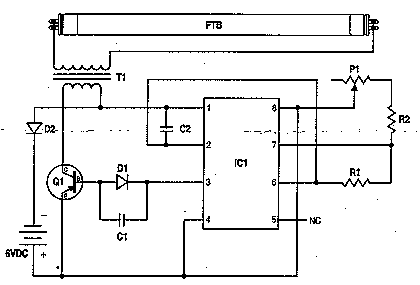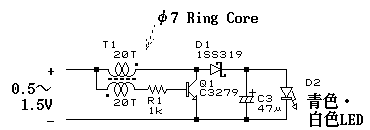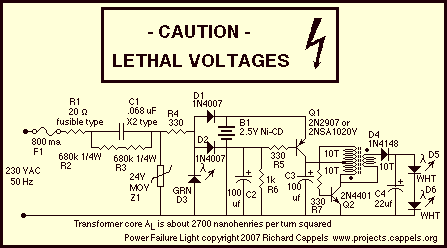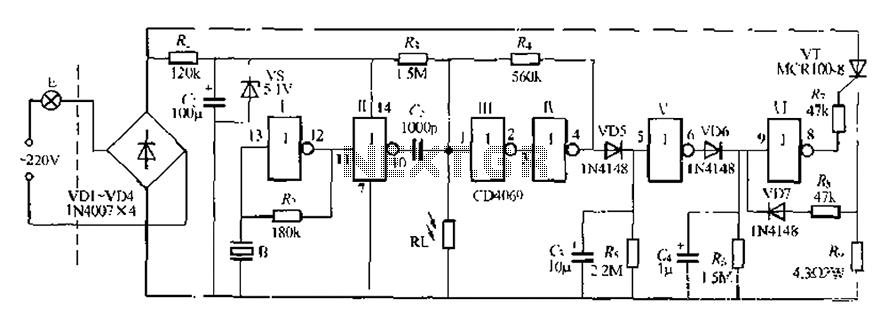
Automatic night light

During daylight hours, the L14B photo-Darlington (registered as 2N5777 through 2N5780) shunts all gate current to ground. At night, the L14B effectively provides a high resistance, diverting the current into the gate of the C106B and turning on the lamp.
The circuit utilizes the L14B photo-Darlington transistor, which functions as a light-sensitive switch. During daylight, the presence of light causes the L14B to conduct, effectively shorting the gate of the C106B thyristor to ground. This action prevents the thyristor from turning on, thereby keeping the connected lamp off. The L14B operates in its active region when exposed to light, ensuring that no significant gate current flows to the C106B.
As the ambient light decreases at night, the L14B transitions to a high-resistance state. This change allows the gate of the C106B to receive sufficient current, facilitating its turn-on. The C106B, once triggered, allows current to flow through the lamp circuit, illuminating the lamp. The design ensures that the lamp operates only in the absence of daylight, providing an automatic lighting solution that responds to environmental changes.
The circuit can be used in various applications, such as outdoor lighting systems that require automatic activation at dusk. The reliability of the L14B photo-Darlington and the C106B thyristor makes this configuration suitable for energy-efficient lighting solutions, minimizing manual intervention and enhancing convenience.During daylight hours, the L14B photo-Darlington QEDEC registered as 2N5777 through 2N5780) shunts all gate current to ground At night, the L14B effectively provides a high resistance, diverting the current into the gate of the C106B and turning on the lamp. 🔗 External reference
The circuit utilizes the L14B photo-Darlington transistor, which functions as a light-sensitive switch. During daylight, the presence of light causes the L14B to conduct, effectively shorting the gate of the C106B thyristor to ground. This action prevents the thyristor from turning on, thereby keeping the connected lamp off. The L14B operates in its active region when exposed to light, ensuring that no significant gate current flows to the C106B.
As the ambient light decreases at night, the L14B transitions to a high-resistance state. This change allows the gate of the C106B to receive sufficient current, facilitating its turn-on. The C106B, once triggered, allows current to flow through the lamp circuit, illuminating the lamp. The design ensures that the lamp operates only in the absence of daylight, providing an automatic lighting solution that responds to environmental changes.
The circuit can be used in various applications, such as outdoor lighting systems that require automatic activation at dusk. The reliability of the L14B photo-Darlington and the C106B thyristor makes this configuration suitable for energy-efficient lighting solutions, minimizing manual intervention and enhancing convenience.During daylight hours, the L14B photo-Darlington QEDEC registered as 2N5777 through 2N5780) shunts all gate current to ground At night, the L14B effectively provides a high resistance, diverting the current into the gate of the C106B and turning on the lamp. 🔗 External reference





